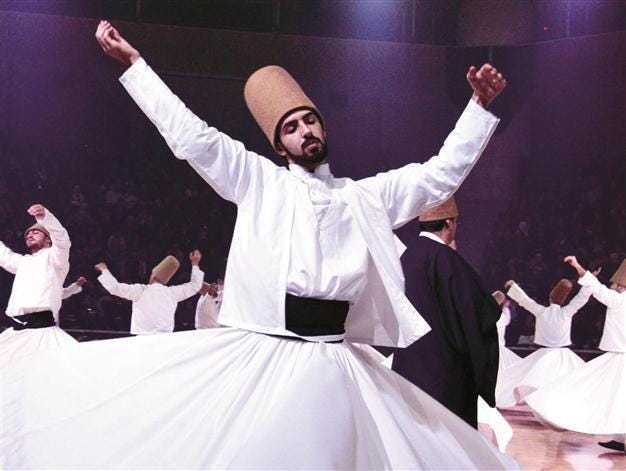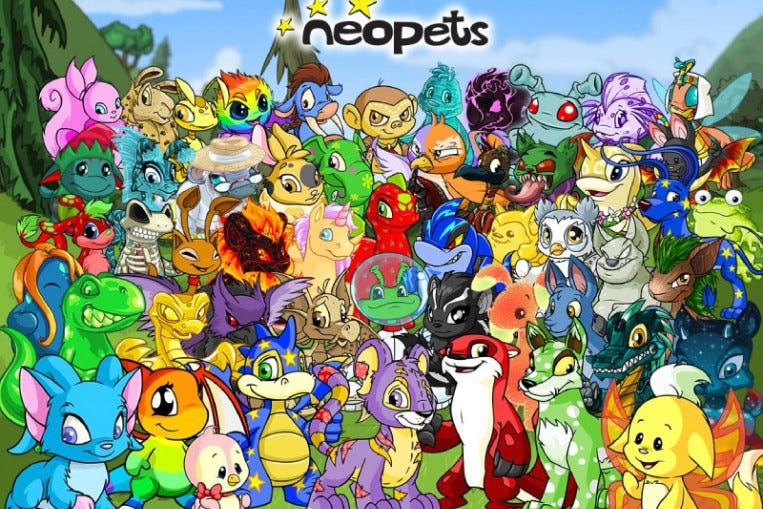Software as an Art
What a monumental year to be an engineer who yearns to create art.
One of my deepest existential struggles has been reconciling the dual identities of artist and engineer. For 26 years — and counting — I've been searching for the roughly Shubha-shaped hole where I might best fit into this world.
Intuition tells me there’s something I was meant to do with both art and engineering, but logic struggles to piece apart exactly how.
Did I choose engineering because I was born to Silicon Valley engineers and it was the only path to financial independence I understood at 17? Do I secretly long for the canvas? The stage? The pen?
Or maybe I was meant to keep my hobbies and work strictly partitioned — shield the things that make me feel most alive from the mind-numbing whip of monetizable creativity and the relentless pressure to produce more, more, more.
Maybe if I keep art very close but just outside the purview of the corporate eye, I’ll strike a perfect balance through building technical plumbing for artists and pursuing artistic hobbies on the side.
Or maybe I was meant to be a new media artist and have my work shown to elegant onlookers in cold museum halls.
Even when I tried to bring art and engineering as close as I possibly could, it was never enough. They never truly intersected. I struggled to see software as an art form in the way music, painting, or fashion are direct channels for expression.
After all, I can't really think of another artistic medium that is defined by such narrow metrics of “success.”
Software is usually considered “good” if it is efficient, elegant, and functional. That’s like saying, “Classical music is the most musical music to ever exist.”
When someone dares to pin Beethoven’s Symphony No. 5 as the pinnacle of music, the deathcore band Infant Annihilator drops a track titled Childchewer, racks up millions of streams, and redefines what music can even be.
That’s why art is so beautiful.
There’s a near-infinite multiverse of expression that can come from any medium, precisely because there is no single right answer to what “good” even means. Any attempt to define a “correct” perspective directly births a counterculture. And so, our beautiful, complex, infinite multiverse of expression continues to expand.
I imagine there was a moment in history when “clothing” first became “fashion” — where it first served a role beyond utility and became a canvas for culture, identity, and self-expression. This shift from utility to expression was likely marked by technological developments that lowered production costs and increased accessibility. And that’s exactly what’s happening now with software and AI
There are many early innovators in the software-as-art realm. Games and new media have long foreseen the potential for software to transcend utilitarian design. For example, while traditional software optimizes for the fastest route from A to B, a game designer might deliberately introduce friction to carve out the most fun or meaningful path from A to B.
But outside of games and new media art, this ethos is still surprisingly rare in the software world. Can you imagine if fashion only existed on runways?
With the rise of AI-assisted coding and the dramatic reduction of time, energy, and (blood, sweat, and tears) needed to build software, I find my art brain churning as I spend my days re-learning how to build software in a way that is delightful, mischievous, and weird.
We’re entering a distinctly new era: code is the paint, AI is the paintbrush, and software is an art form.
Evolution of Artistic Mediums
Music is perhaps the most evolved artistic medium. Expression through sound was embedded in the human body — our voices, the first instrument.
The accessibility of music and the vast amount of time humans have had to further develop the medium has allowed music to develop a staggeringly broad spectrum of expression and deeply specific level of emotional nuance. This is why Spotify’s AI can create a “pink pilates princess grwm friday morning” daylist for me.
New mediums build on the ones that came before and expand on how we connect with ideas.
A song might vaguely gesture towards a mood or idea, but your own life experience — where you first heard it, who showed it to you, what memory it evokes — can reshape its meaning entirely.
Film, on the other hand, aggregates several crystallized sensory signals (colors, writing, soundtracks, foley, acting, set design, costume design, camerawork, editing, etc.) to create a window into external realities — a far more prescriptive experience than a song. This makes film an incredibly powerful empathy machine, allowing us to step into and inhabit lives far removed from our own.
The difference between a looser, suggestive storytelling form (like music) and a more prescriptive one like film is the number of storytelling dimensions allowed by the medium. This is the center of my interest in technology: how new tech unlocks new dimensions of freedom in art and expression.
Animation adds the dimension of imagined reality to traditional film. Games layer in interactivity — allowing you to live and evolve within a statically defined world. VR pushes the bounds of immersion on film and gaming, allowing us to choose our visual perspective.
Now, with AI, we stand at the threshold of another evolutionary and artistic leap. Software worlds that adapt and evolve alongside you.
The Experience Machine and Beyond (A Small Side Tangent)
This progression raises an interesting question: if we follow the pattern of adding new dimensions to existing mediums, where does this progression lead us?
Robert Nozick’s “Experience Machine” asks whether we’d choose to plug into a system that gives us any experience we desire — pure happiness, love, success — while we float in a tank, unaware it’s all a simulation.
Future immersive media might include direct neural stimulation — machines that replicate exact emotional states, memories, or sensations with biochemical precision (as imagined in Cyberpunk 2077).
As we unlock new storytelling dimensions, stories asymptotically become life itself — or whatever simulation we’re in.
Art, Entertainment, Distraction, & Addiction
For now, let’s back up a bit. The year is 2025, and the barrier to entry for authoring software has dramatically lowered.
With this shift, the floodgates are open and software is finally breaking free from the narrow metrics of “success” that have largely defined the last few decades of the medium.
It’s emerging as a fully expressive medium — like music or poetry. The everyday person’s love letters, grief, poetry, jokes, fears, and rebellion are authored through websites, mobile apps, and video games.
Additionally, AI enables software to evolve alongside the user. Stories become infinite, hyper-personalized, living worlds (what we’re exploring with Figment). Westworld is one robotics revolution away.
As with any powerful, emerging medium, both the good and the bad potential are amplified. Software, like music, like film, like games, can be used for art, entertainment, distraction — or addiction.
The video game industry has rightly been critiqued for engineering addiction into mind-numbing content. But on the other hand, video games like Journey make you realize just how achingly beautiful it is to be alive.
As with any medium, the most sincere, artistic visions often come from indie creators with something to say — not corporations with something to sell.
Video games have barely scratched the surface of their full artistic potential (Raph Koster touches upon this in A Theory of Fun for Game Design), but AI-powered tools are accelerating the process by empowering creators who are indie at heart to be epic in vision.
Artist and Engineer
So: am I an artist who happened to code, or an engineer who yearned to create?
My path is, and has probably always been, the one where those two identities are fully fused. Thanks to AI-assisted development, I can now fluidly inhabit both roles and I no longer feel split between two worlds.
Software is no longer purely an efficiency-first means to an end. It’s a medium in and of itself. And with the developments in AI, it is a living medium — one that evolves, responds, and collaborates.
I'm uncovering new little nuggets of Shubha as I rediscover software as an artistic medium. The motifs I tend to circle around in my work are delightful, mischievous, subtle, and clever, with a dash of the weird (think, frogs).
For example, I love creating software that appears ordinary at first but unravels into something more unexpectedly organic. Delight is in that moment when something familiar reveals itself to be uniquely strange and you find yourself surprised by joy.
As the medium of software evolves, so does my artistic voice.
When we see software as art, designing the brush is painting the picture, and there are really no rules other than to express something interesting.
This is where the artist and engineer in me finally converge.
P.S. Kid Pix was early on in the software-as-art game and is a huge inspiration! Hear from Mr. Kid Pix himself.








